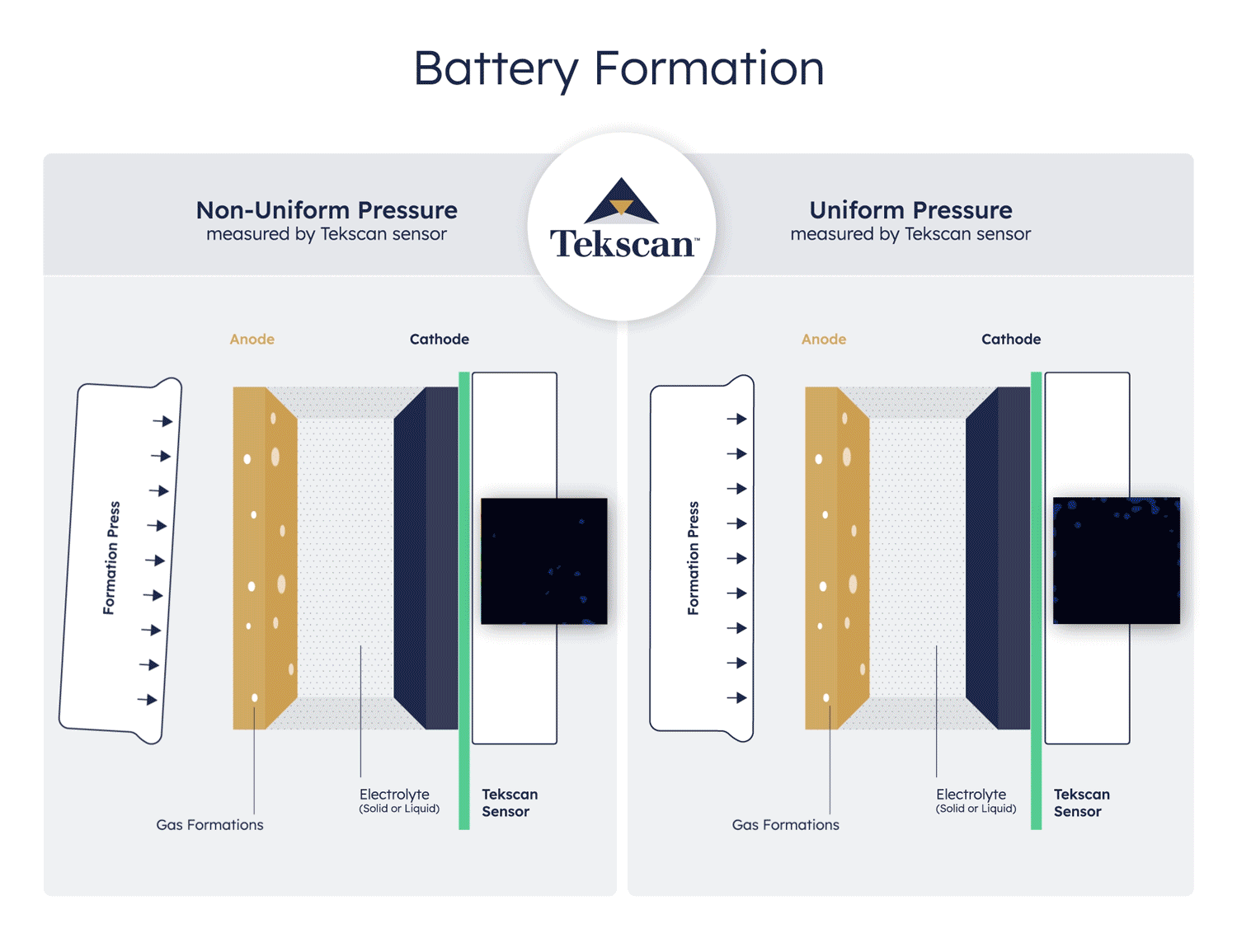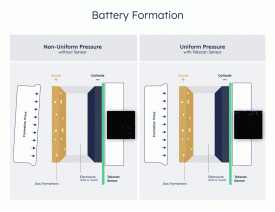Battery formation is a pivotal stage in the manufacture of batteries, determining their performance and longevity. This process involves the initial electrochemical transformation of raw materials, shaping the battery's efficiency and stability. Through controlled charge and discharge cycles, the cell undergoes essential chemical reactions, establishing its functional capacity. As advancements in energy storage technologies progress, optimizing the battery formation process becomes crucial for developing durable and high-performance solutions across diverse industries.
Tekscan’s I-Scan pressure measurement system gives engineers and technicians key insights during the battery formation process. It's just one way that pressure mapping helps bring power innovations into reality.
Can Pressure Mapping Improve the Battery Formation Process?
Since battery formation typically represents 30 – 32 % of production costs*, even small efficiency improvements can yield major savings. By optimizing pressure and temperature, manufacturers can shave hours off cycle times and reduce reject rates

Ensuring uniform pressure during the formation process can:
-
Reduce Formation Time: Applying the right amount of pressure can accelerate the formation process by enhancing ion transport and surface reactions. This can lead to shorter formation times, reducing production costs and increasing manufacturing throughput.
-
Optimize Degassing Process. (See animated diagram). Any non-uniform pressure during formation can result in gas formations in the anode layer. Maintaining uniform pressure distribution through the formation process helps ensure the fewest unwanted formations.
-
Ensure a Stable Solid-Electrolyte Interface (SEI): Pressure aids in forming a robust and effective SEI layer. SEI layer prevents unwanted side reactions and enhances battery stability.
-
Ensure Uniform Electrode-Electrolyte Contact: Proper pressure distribution ensures uniform contact between electrodes and electrolyte. This promotes consistent ion diffusion and efficient electrochemical reactions throughout the battery, leading to improved capacity, cycle life, and overall performance.
-
Improve Efficiency: Avoid wasteful energy cycles by identifying reject batteries early in the formation process.
-
Tailored Cycling Profiles: Understanding pressure effects enables the optimization of cycling profiles for different battery chemistries. Delivers peak battery performance while maintaining longevity.
-
Improved Energy and Power Density: Consistent pressure achieves uniform electrode density. Impacts energy storage capacity and charging/discharging rates.
-
Manufacturing Consistency: Consistent pressure application during battery formation ensures reproducibility and consistency across batches, resulting in reliable and predictable battery performance for end-users.
Impact of Temperature on Battery Formation
Tekscan’s I‑Scan solution enables simultaneous pressure and temperature mapping—so you can directly correlate mechanical load with thermal events in real time.
Effects of elevated formation temperatures:
- Accelerate SEI formation, reducing formation time
- Create a more homogenous SEI layer due to higher diffusion rates
- Lower internal resistances
- Potential for increased capacity loss.
Conflicting results? Map temperature in real-time and optimize!
The formation process is only one of many steps in the battery life-cycle where monitoring pressure can provide value and key insights. Tracking pressure changes in materials R&D, housing design, stack assembly, and manufacturing quality assurance can be the critical difference.
Ready to bring advanced sensing into your battery development or production process?
We can help you find or customize a product for your application.
---
* Source: iScience Current and future lithium-ion battery manufacturing Yangtao Liu, April 23, 2021



